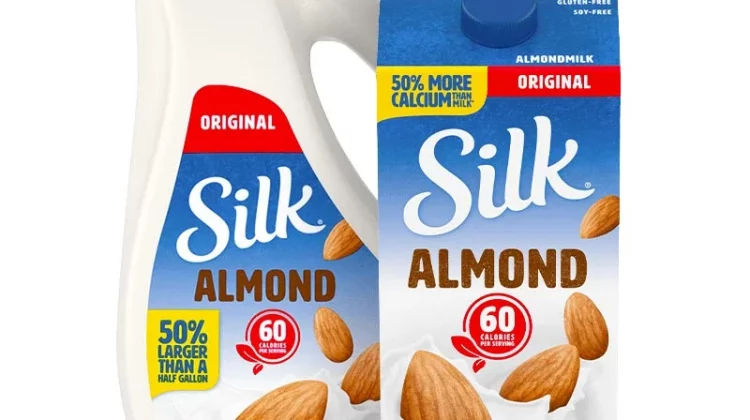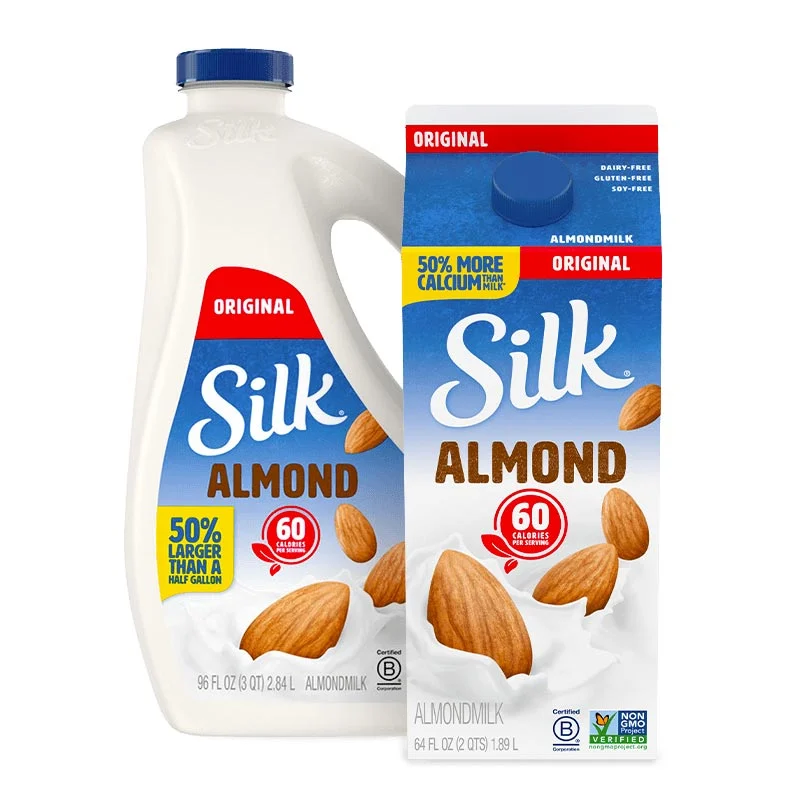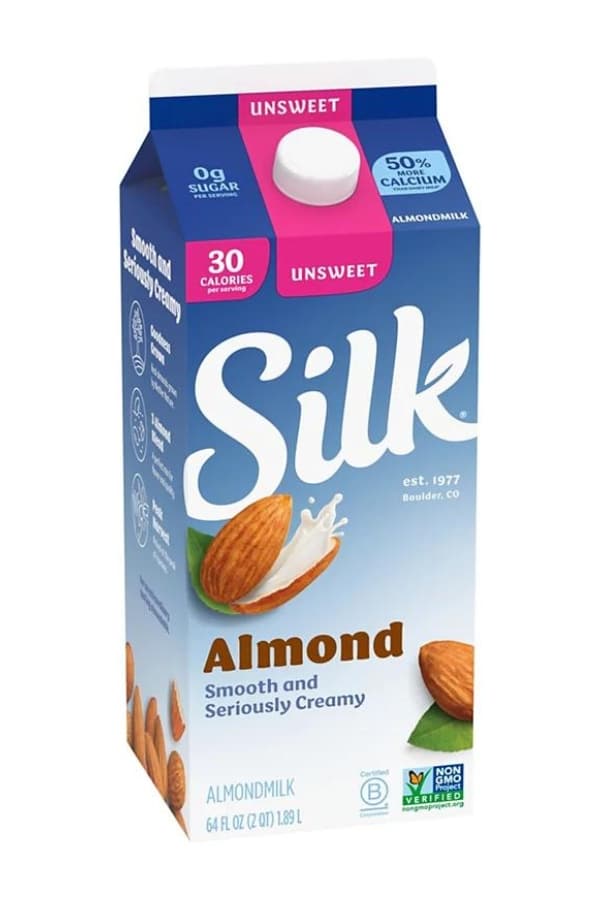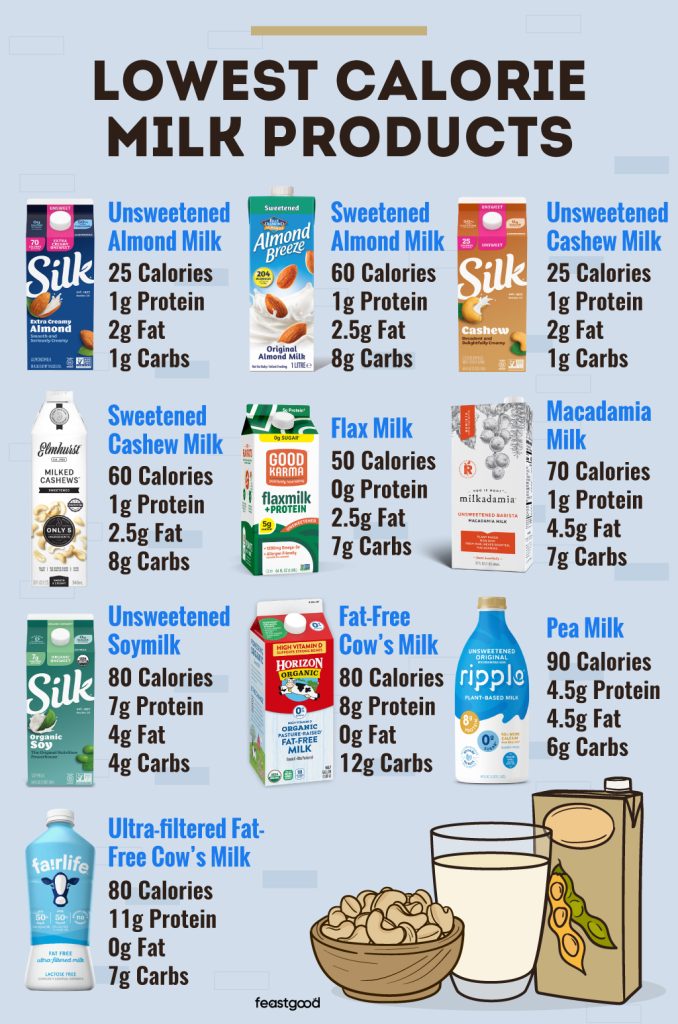
In the pursuit of a healthier lifestyle, many individuals are looking for ways to reduce their calorie intake without sacrificing taste or nutrition. One area where this quest often leads is in the search for low-calorie milk options.
From almond milk to oat milk and everything in between, the variety of choices can be overwhelming. In this comprehensive guide, we will explore 19+ of the best low-calorie milk options, each containing fewer than 90 calories per serving.
By the end of this guide, you’ll have a thorough understanding of the nutritional benefits and flavor profiles of each option, allowing you to make informed decisions about which ones to incorporate into your diet.

Here Are The 19 + Low Calorie Milk
1. Almond Milk (Unsweetened)
Almond milk is a popular dairy-free alternative made from almonds and water. It is naturally low in calories, with approximately 30-40 calories per cup. Almond milk is also a good source of vitamin E, which is an antioxidant that helps protect cells from damage.
2. Cashew Milk (Unsweetened)
Cashew milk is another dairy-free alternative that is creamy and slightly sweet. It contains around 25-50 calories per cup and is rich in healthy fats, protein, and essential nutrients like magnesium and zinc.
3. Coconut Milk (Unsweetened)
Coconut milk is made from the flesh of mature coconuts and has a rich, creamy texture. Unsweetened coconut milk contains approximately 45-60 calories per cup and is high in medium-chain triglycerides (MCTs), which are a type of fat that may aid in weight loss.
4. Oat Milk (Unsweetened)
Oat milk has become increasingly popular in recent years for its creamy texture and slightly sweet flavor. It provides roughly 60-70 calories per cup and is a good source of fiber, which can help keep you feeling full and satisfied.
5. Soy Milk (Unsweetened)
Soy milk is made from soybeans and is a complete protein source, meaning it contains all nine essential amino acids. It typically contains around 70-80 calories per cup and is rich in vitamins and minerals like calcium, vitamin D, and potassium.
6. Rice Milk (Unsweetened)
Rice milk is made from milled rice and water and has a naturally sweet flavor. It contains approximately 70-90 calories per cup and is free of lactose, making it a good option for those with lactose intolerance.
7. Hemp Milk (Unsweetened)
Hemp milk is made from the seeds of the hemp plant and has a slightly nutty flavor. It provides around 60-80 calories per cup and is a good source of omega-3 and omega-6 fatty acids, which are important for heart health.
8. Flax Milk (Unsweetened)
Flax milk is made from flaxseeds and water and has a mild, slightly nutty flavor. It contains roughly 25-40 calories per cup and is rich in omega-3 fatty acids, which have been shown to reduce inflammation and improve heart health.

9. Pea Milk (Unsweetened)
Pea milk is made from yellow peas and has a creamy texture similar to dairy milk. It provides around 70-80 calories per cup and is high in protein, making it a good option for those looking to increase their protein intake.
10. Skim Milk
Skim milk is made from cow’s milk and has had the fat removed, resulting in a lower calorie content. It typically contains around 80-90 calories per cup and is a good source of calcium and vitamin D.
11. 1% Milk
1% milk is similar to skim milk but contains slightly more fat, resulting in a slightly higher calorie content of around 100-110 calories per cup. It still provides essential nutrients like calcium and protein.
12. 2% Milk
2% milk contains more fat than skim or 1% milk, resulting in a richer flavor and texture. It provides approximately 120-130 calories per cup and is a good source of vitamins and minerals.
13. Goat Milk
Goat milk is naturally lower in lactose than cow’s milk and has a slightly tangy flavor. It contains around 70-90 calories per cup and is rich in vitamins and minerals like calcium, phosphorus, and potassium.
14. Ripple Pea Milk
Ripple pea milk is made from peas and has a creamy texture similar to dairy milk. It provides around 70-80 calories per cup and is fortified with vitamins and minerals like calcium and vitamin D.
15. Fairlife Fat-Free Milk
Fairlife fat-free milk is made from cow’s milk but has had the lactose removed, resulting in a lower calorie content of approximately 80-90 calories per cup. It is also higher in protein and lower in sugar than traditional milk.
16. Califia Farms Unsweetened BetterHalf
Califia Farms BetterHalf is a blend of almond milk and coconut cream that is perfect for adding creaminess to coffee or tea. It contains only 15-20 calories per serving and is free of added sugars.
17. Good Karma Flax Milk
Good Karma flax milk is made from flaxseeds and has a creamy texture similar to dairy milk. It contains around 25-50 calories per cup and is fortified with vitamins and minerals like calcium and vitamin D.

18. Silk Unsweetened Vanilla Almond Milk
Silk unsweetened vanilla almond milk adds a hint of vanilla flavor to your favorite recipes. It contains approximately 30-40 calories per cup and is a good source of vitamin E and calcium.
19. Blue Diamond Almond Breeze Unsweetened Almond Coconut Milk Blend
Blue Diamond almond breeze unsweetened almond coconut milk blend combines the creamy texture of almond milk with the tropical flavor of coconut. It contains around 45-60 calories per cup and is free of added sugars.
20. Westsoy Unsweetened Soymilk
Westsoy unsweetened soymilk is made from whole soybeans and has a rich, creamy texture. It contains around 70-80 calories per cup and is a good source of protein and essential nutrients.
Frequently Asked Questions (FAQ)
lowest calorie milk alternative
For your low calorie milk alternative, Almond milk is often considered the lowest calorie milk alternative, with around 30-60 calories per cup depending on the brand and any added sweeteners. It’s naturally low in calories and offers a nutty flavor without the saturated fat of dairy milk.
What qualifies a milk option as “low calorie”?
- Milk options with fewer than 90 calories per serving are considered low-calorie. This includes various plant-based alternatives like almond milk, soy milk, and oat milk, as well as skim or low-fat dairy milk.
How do these low-calorie milk options compare in taste and texture to regular dairy milk?
- Low-calorie milk alternatives often have unique flavors and textures compared to dairy milk. Some may have a nuttier taste (like almond milk) or a creamier texture (like oat milk). Taste preferences vary, so experimenting with different options is recommended.
Are there any nutritional differences between low-calorie milk options and traditional dairy milk?
- While low-calorie milk alternatives typically contain fewer calories and less saturated fat than dairy milk, they may vary in terms of protein, calcium, and other nutrients. It’s essential to check labels for fortified versions that offer similar nutritional benefits.
Can low-calorie milk options be used in cooking and baking as substitutes for dairy milk?
- Yes, low-calorie milk alternatives can often be substituted for dairy milk in cooking and baking. However, keep in mind that the flavor and consistency may differ slightly, so experimentation may be needed to achieve desired results.
Are there any specific health benefits associated with consuming low-calorie milk alternatives?
- Low-calorie milk options can be beneficial for individuals looking to reduce their calorie intake or those with dietary restrictions such as lactose intolerance or dairy allergies. Additionally, some varieties are fortified with vitamins and minerals, providing added health benefits.
Conclusion
In conclusion, there are many low-calorie milk options available that can help you reduce your calorie intake without sacrificing taste or nutrition. Whether you prefer almond milk, soy milk, oat milk, or any other dairy-free alternative, there is a low-calorie option out there to suit your needs.
By incorporating these low-calorie milk options into your diet, you can enjoy the creamy goodness of milk without worrying about your waistline. So go ahead, pour yourself a glass, and savor the goodness guilt-free.
